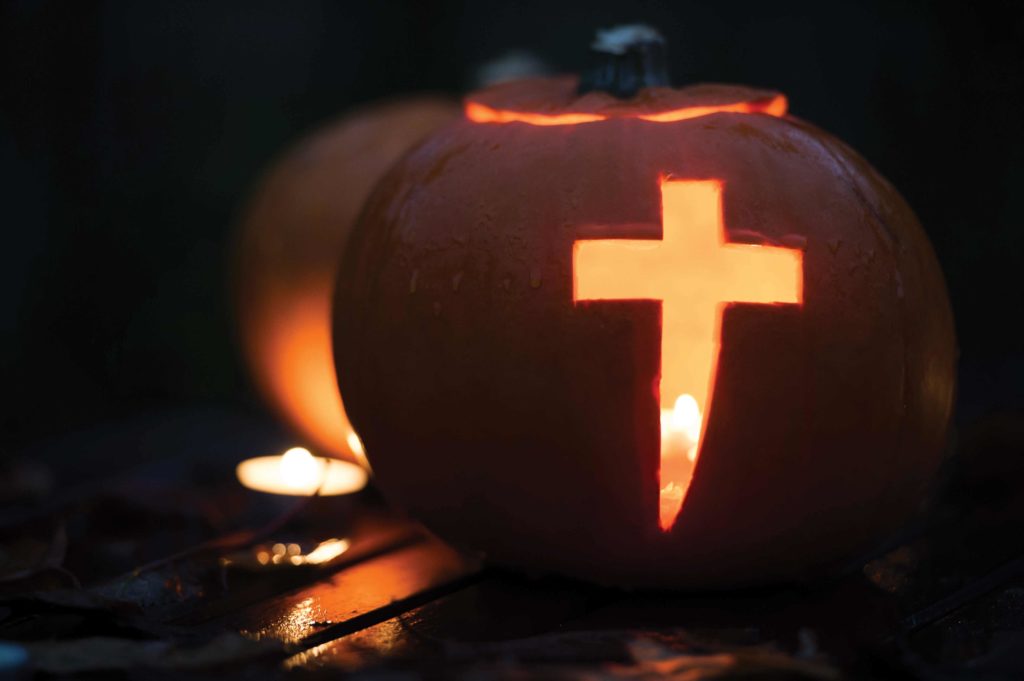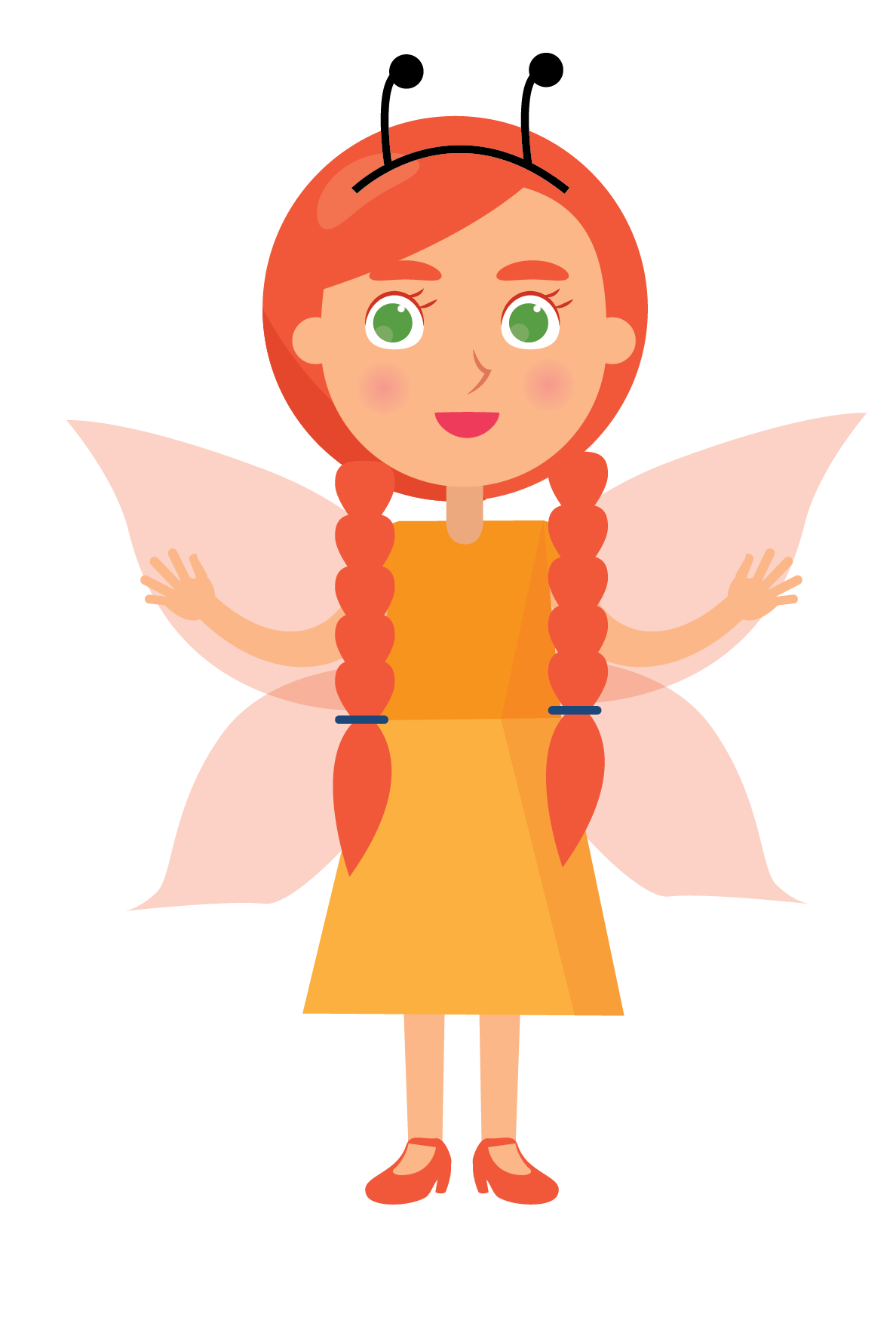Tips to Celebrate Halloween

Many families have their doubts about celebrating Halloween. For some, the practice of trick-or-treating is seen as yet another invasion by American culture. For others, the association with pagan ritual is viewed as inappropriate and even dangerous for children.
In fact, Halloween has deep Christian roots, dating back to the eighth century, when Pope Gregory III established All Hallows (known to Catholics as All Saints Day) on November 1st. This was to be a day to honour all the saints who died with or without Church recognition. All Souls Day follows on November 2nd and is a time in which we pray for all the dead, including our own special friends and family.
Light, long a symbol of life in Jesus, was used on ‘Halloween’ (meaning ‘All Holies (or Saints) Eve’) to welcome good spirits and ward off evil ones. Candles were lit and placed inside hollowed-out squash, turnips, or later, after the discovery of America, pumpkins. Children, wearing masks, would go ‘souling’ from door to door, begging for soul cakes for the those in purgatory.
Unfortunately, Halloween also coincides with a pagan festival honouring the god of the dead where customs intended to appease evil spirits, avoid hauntings and foretell the future are common. These customs and other occult practices can confuse children and should be discouraged.
At All Hallows, we celebrate…
- Our heavenly family – Those men and women of virtue and faith who lead lives of holiness, courage and generosity and are now saints in heaven. Their heroic lives inspire us and provide excellent role models for our children. Some families like to pray the ‘Litany of the Saints’, calling on favourite saints to “pray for us”.
- Our deceased family member – This is a good time to recall fond memories of our loved ones, go through old photo albums, visit their grave sites, and of course, pray for them. Children enjoy lighting candles and saying prayers for loved ones.
- Our living family – We shy away from talking about death, but really, death is the surest reality of our lives. This feast reminds us to reflect on our priorities and make the most of every opportunity to express our love and affection for those close to us. Use this time to affirm a saintly quality or virtue that you see in each family member.
How to create costumes from recycled clothes:
Children love to dress up and its good for them too: it encourages fantasy play which stimulates their imagination and healthy interaction with siblings and friends. But it doesn’t have to be expensive or difficult if you keep your eye open for discarded clothing and fabrics to develop a dress up wardrobe:
- Large adult T-shirts make good tunics for children which can be added to with belts, scarves, armour etc to create a costume.
- Old sheets, wraps and scarves can be used as cloaks, sashes and veils.
- Garage sales and salvage shops are a good source of hats, shoes, gaudy belts and discarded formal dresses which can be tucked and pinned or tacked to fit.
- End-of-roll fabric scraps can be picked up for a few dollars from habidashery stores.
- Old cardboard packaging can be cut, painted and decorated to make crowns, hats, wings, swords, helmets etc.
- Paint, beads, sequins, feathers, glitter and other craft supplies can be purchased cheaply from thrift shops.
Read All About It
Children may like to learn more about their saint or see a picture. Encourage your children to access the many books available in libraries and Christian book shops. The internet
 is also a good source of information on saints and angels.
is also a good source of information on saints and angels.
Angel Themes – Small children make delightful angels; tunic (eg large t-shirt) tied with a sash, fairy wings, tinsel halo. Older children may prefer to dress in a more sophisicated style using flowing robes and decorated masquerade masks. Wings can be made by bending two wire coathangers into shape and covering with pantyhose. The wings can then be spray painted and/or decorated with glitter, sequins or feathers. Alternatively, knot strips of white shopping bags or fabric to resemble feathers.
The Archangel Michael is the commander of God’s legion and served in the War in heaven (Rev 12:7-9): tunic, sash, wings decorated with feathers or fabric, armoured breast plate and a sword. The Archangel Gabriel is the herald of heaven and visited Mary to announce the coming birth of Jesus and John the Baptist (Lk 1:26): tunic, sash, wings decorated with feathers or fabric,and a gold staff or trumpet.
Royalty Themes – Mary, the mother Jesus, is known as the Queen of Heaven: tunic and long veil in white and blue, sash, crown. King Solomon was known for his wisdom: tunic with sash, sandals, cape, crown and scales of justice. Queen Elizabeth of Hungary would take food to the poor hidden in her cloak. When stopped by the disapproving king, instead of food, roses tumbled out: princess dress, tiara or crown, cape, roses.
Caesar Constantine was the first Roman emperor to become a Christian: Roman style tunic with sash, sandals, cape and olive wreath crown. Let’s not forget the Magi (Three Kings) who paid homage to the infant Jesus: kingly robes with Middle Eastern headdress or crown, and box or bottle representing the gifts (gold, frankensence and myrrh).

Warrior Themes – St George who slayed the dragon (a symbol of evil) is traditionally represented as an armoured knight on horseback: knights shield, armour and helmet, sword and cape. StVincent de Paul was captured by pirates and sold into slavery as a young man. After two years in captivity he converted his master and began a ministry of service to the poor. Dress as one o
f his pirate converts: striped shirt, rolled up pants or long shorts, kerchief around head, eye patch. The boy David slayed the giant Goliath with only a sling shot: tunic tied at the waist, sandals, sling shot, pouch of stones. St Joan of Arc lead France to liberation from the English before she was captured and burned at the stake: tunic, armour, sword, flag on a staff. St Ignatius was a military leader before he was wounded in battle: tunic, armour, sword.
Popular Saints – St Francis is often shown in conversation with the birds: brown tunic, sandals, monks hair could imitated by making a flesh-coloured skull cap. Australia’s own Blessed Mary Mackillop was a school teacher and founder of the Sisters of St Joseph: brown tunic with white bib, brown veil with wimple, rosary beads. St Nicholas was the bishop of Myra who secretly threw money for a dowry through a poor family’s window so that the three daughters would be saved from prostitution. This later gave rise to the Santa Claus (meaning Saint Nicholas) tradition of gift giving: a traditional santa suit or bishop’s attire (tunic, cross or shepherd’s staff, bishop’s hat).
St John the Baptist spent much of his life as a hermit living on locusts and honey: tunic made from a heshan sack, sandals, wild bushy beard. St Peter was a fisherman and apostle of Jesus who became the first pope: tunic with sash, sandals, fishing net or large key (representing the keys of the kingdom).
Multicultural & Animal Themes – There are saints from almost every nation. Try Kateri Tekawitha (American Indian), Paul Miki & Companions (Japanese), Juan Diego (Mexican), St Cyprian  (African), or Mother Teresa, famous for her work amoung the poor of Calcutta (white Indian sari with blue trim).
(African), or Mother Teresa, famous for her work amoung the poor of Calcutta (white Indian sari with blue trim).
For those with an appreciation for animals, there’s the lions who spared Daniel in the Old Testament, the donkey upon which Mary and Jesus rode, the camel that carried the Magi, or the wild dog tamed by St Francis. Butterflies are a symbol of the resurrection, doves a symbol of peace.
